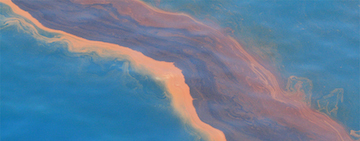390916-spill.jpg

Large oil spills account for only a small portion of the total oil that enters the oceans each year. Credit: National Oceanic and Atmospheric Administration
When the Exxon Valdez ran into a reef off the coast of Alaska more than a quarter of a century ago, it created an environmental catastrophe. The tanker released 40,000 tons of crude oil into the water, killing fish, mammals, and a quarter of a million birds.
Yet much more oil enters the oceans every year through daily human activities. Oil from leaking car engines, pipelines, and industrial facilities washes into rivers and streams, which flow to the coast. Small boats leak directly into the water. So do coastal refineries and off-shore drilling platforms.
In fact, a study a few years ago found that about a third of all the oil discharged into the oceans came from these kinds of sources. Their immediate impact isn’t as nasty as that of a major spill, such as the Exxon Valdez or the Deepwater Horizon drilling rig explosion in the Gulf of Mexico.
Yet the drip, drip, drip from these sources can add up. Even small amounts of oil and related chemicals can damage the habitats of birds, fish, turtles, and other creatures. That can kill the creatures that are already there, and make it more difficult for the survivors to produce healthy offspring. The oil and chemicals can also accumulate in the tissues of fish and shellfish, making them inedible.
So while big spills get all the headlines, they don’t do all the damage. Keeping cars and boats in good working order, cleaning up any leaks, and properly disposing of used oil can help minimize that damage — keeping the oceans cleaner and safer.

